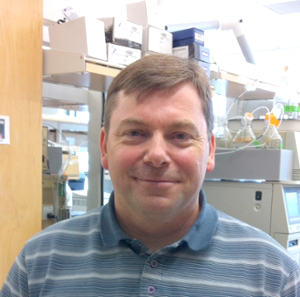
Randy Purves
Research ScientistCore Mass Spectrometry Facility, 2D10 Health Sciences
- Address
- 2D10 Health Sciences
Dr. Randy Purves is a Research Scientist at the Canadian Food Inspection Agency (CFIA) and an adjunct professor in the Department of Chemistry and the College of Pharmacy and Nutrition at the University of Saskatchewan. He obtained his B.Sc. Honors (with distinction) in Applied Chemistry at the University of Calgary in 1992. His Ph.D. in Analytical Chemistry at the University of Alberta involved developing electrospray mass spectrometry instrumentation under the supervision of Prof Liang Li (conferred 1997). Dr. Purves has nearly 30 years of experience in bioanalytical mass spectrometry and was a leader in recognizing the importance of the complementary nature of ion mobility devices for use with mass spectrometry. Dr. Purves co-founded Ionalytics in 2001 and was an integral part of the Ionalytics team that produced the first commercial ion mobility device (FAIMS) for use with mass spectrometry (2003). After the acquisition of Ionalytics by Thermo Fisher, Dr. Purves has continued to collaborate with Thermo Fisher on further developing FAIMS.
Dr. Purves’s expertise involves applying mass spectrometry based solutions to solve complex analytical problems across several disciplines. His research interests can be broadly divided into two main areas. The first area involves his continued research into advancing FAIMS, primarily for use in small molecule quantification in food safety. Dr. Purves collaborated with Thermo Fisher on improving the FAIMS interface for higher gas intake mass spectrometers, which resulted in the recently released FAIMS Pro. Dr. Purves has been particularly interested in using FAIMS for detecting veterinary drug residues in tissues. Often these residues are low molecular weight analytes present in complex matrices, which are adversely affected by high chemical background noise, and therefore amenable to FAIMS.
Dr. Purves’s other main research area involves untargeted metabolomics. One area in which this research is currently being used is to better understand biochemical pathways of pulse crops to help breeders improve nutritional value. A collaboration between the CFIA and the College of Agriculture and Bioresources at the University of Saskatchewan is an integral component of this research. Dr. Purves is also using an untargeted approach to investigate unusual or unexpected metabolites of veterinary drug residues. This is especially important for banned, or not approved substances, in which the lowest detection limits possible are desired.
